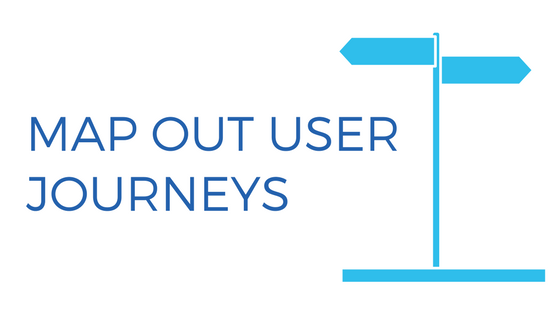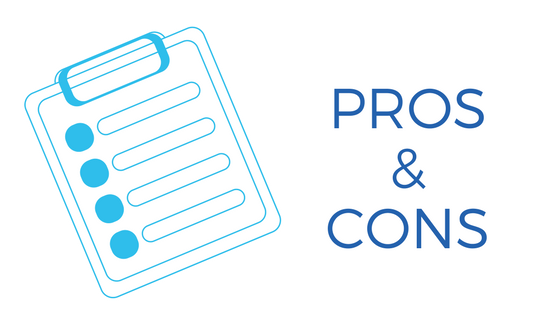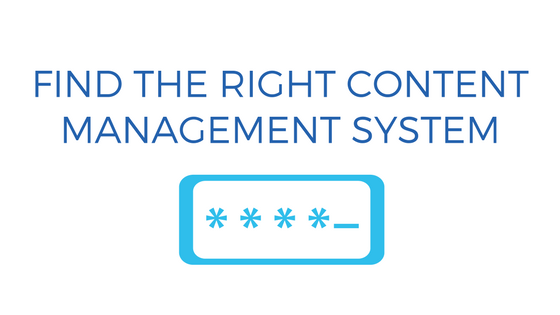Thinking of redesigning your glazing website? Here are 10 things to take into consideration before you get started.

1. Map out user journeys
Start by identifying:
- What are visitors on your site for?
- What action do you want them to take?
The way you guide visitors from point A to point B is your user journey. Think carefully about what information your visitors need to see to help them progress and eventually, take action (whether that be filling out a form, picking up the phone, sending an email etc).
An increasing number of customers research their options online from their mobile phone first. Design user journeys based on mobile first, desktop second.

2. What's working and what's not working on your current website
Don't throw the baby out with the bath water, there may be some really great features on your current website that are performing well — keep those. Talk to staff and customers about the website elements they find useful and would be sad to see go.
On the other hand, there may be elements of your website that you're attached to that aren't delivering results. Hopefully you have Google Analytics enabled on your existing website so you can see exactly where the drop off is (pages with a high 'bounce rate' should be your first starting point).
Try getting a friend or family member who isn't familiar with your website to go through it and complete a series of tasks. How long does it take them to find your contact details? Are they able to list the services you provide? Watch them navigate the site and see where the obstacles are.

3. Carefully structure your navigation
Nothing gets rid of visitors faster than a website that's difficult to navigate (well, maybe slow load times). Your navigation is not the place to get creative — keep it simple, restrict it to one main level and one sub-level at most, and use obvious labels to describe the items. You should have planned out all the items for your navigation before you get to the design stage.

4. Plan your content
Content isn't just for filling up your pages once you've got them there, content is king.
Before redesigning your website you should know the kind of content you're going to post so you can structure navigation to accommodate it, i.e. are you going to have a blog? Will you use photo galleries to display your work or long-form case studies?
Whatever you're planning, tailor your design to your content rather than your content to your design.

5. Plan out your home page in detail
Your website's home page needs to strike the right balance between function and curb appeal — it's got to look inviting but provide clarity around what action you'd like the viewer to take next.
Check out HubSpot's 20 of the Best Website Homepage Design Examples for inspiration.

6. Look and feel — does it reflect your brand?
If a returning customer visits your new website, there should still be recognizable elements of your brand that echo your old website. You don't want them to feel like they're in a completely different place — the familiar is comforting.
Any changes you make to your brand should be an evolution rather than an overhaul, keep a consistent or similar color palette, logo, font, and tone of voice.
See our 3 Easy Brand Consistency Tips for Glaziers article.

7. Connect your online and offline presence
Your website shouldn't exist in isolation, it should be an integral part of your business as a whole. Think about where you can use your website to create efficiencies within your business:
- Consider creating an FAQ section on your website to mitigate time spent answering repetitive questions over the phone
- Create a contact form for submissions to capture all relevant information at once and stop deciphering customer emails
- Use a blog or news section to keep customers up-to-date on things like closures for public holidays and other useful company notifications

8. Budget time for testing
It can be tempting to rush a project along, a new website is exciting and naturally you want to show it off as soon as possible! However, it's much easier to fix bugs before your site is live, often fixing one problem causes another.
Here's a checklist of things to check before you launch.

9. Make sure your analytics are working before you go live
Don't invest all that time and effort in getting your website in tip-top shape only to wonder what impact it's having. Track your results right from the beginning, you may
To see how your new website is tracking compared to your old one, try Google Analytic's date comparison tool. Take a look at the last 30 days performance of your new website, then compare back a year earlier and see what the numbers look like. Here's a tutorial on how to do it.

10. Content Management System
Your content management system (CMS) is the framework of your website house. If you are working with a web design company or a web developer, they may have one or two CMS they exclusively work with. When you're choosing a company to work with, take their preferred CMS into consideration and do your homework to make sure it's something you'll be comfortable using to update your site in the long term.
If you're doing your website redesign internally, look for a CMS that will be easy and flexible for your design needs. A CMS like WordPress has a wide variety of free templates and plugins that make a great starting point, and it can be expanded over time. For ease of design, a hosted solution like Wix or Squarespace may be better for your requirements.



